Low-salinity culture successful
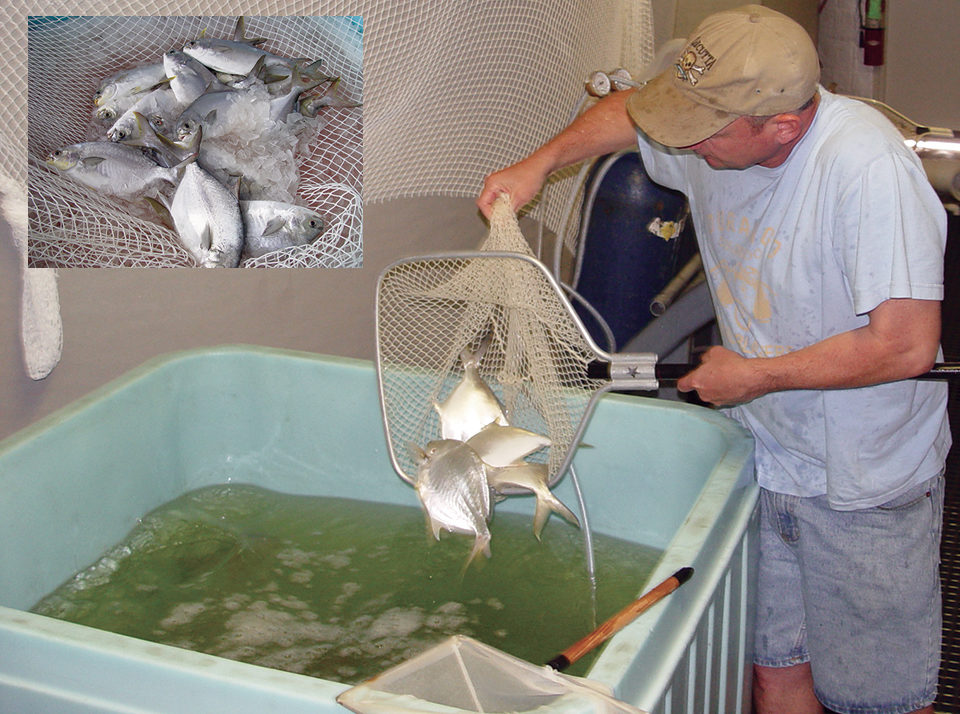
Florida pompano (Trachinotus carolinus) are found in coastal waters of the Atlantic Ocean from Massachusetts, USA, to Brazil and throughout the Gulf of Mexico, where this high-value species is prized by both recreational and commercial fishermen. Due to pompano’s superior market value, interest in its culture developed in the United States during the 1960s and 1970s.
Research conducted during this time period focused largely on developing production methods using ponds, in-pond cages, and flow-through tanks. Common results for these studies included poor growth and feed conversion of fish greater than 200 g, usually coupled with poor survival, resulting in the inability to produce market-size fish of greater than 450 grams.
However, in a preliminary study conducted at Louisiana State University by the lead author using small-scale recirculating aqua-culture systems (RAS) maintained at a salinity of 23 to 28 ppt, it was demonstrated that juvenile pompano can be reared at relatively low densities from an initial weight of 17 grams to over 450 grams in four to five months and 700 grams in eight to nine months, with 95 percent survival.
Florida study
The ability to rear fish at relatively high densities is of importance to commercial aquaculture operations, especially those employing RAS. Although both positive and negative relationships between stocking density and various fish production indices have been documented, the latter is usually the case, as shown by the results of density studies conducted on a variety of marine finfish species.
The authors recently carried out a study to compare production characteristics and body composition of juvenile pompano reared to market size in commercial-scale RAS at moderate and high culture densities. Because results of limited research coupled with anecdotal observations at the research facility suggested that pompano can grow at reduced environmental salinities, fish were reared at a nominal salinity of 5 ppt.
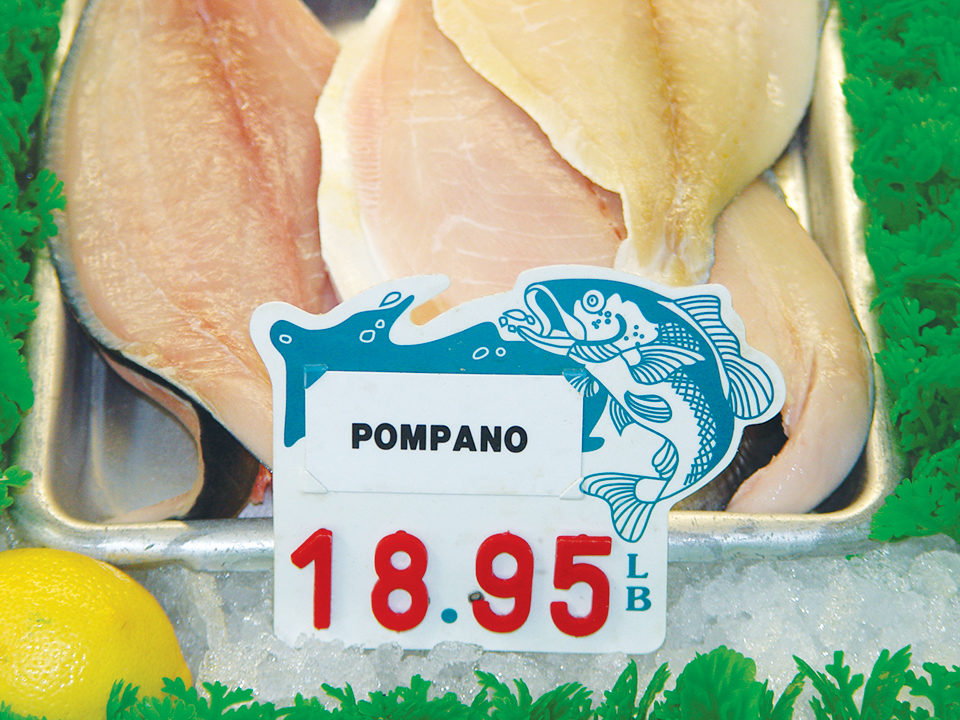
Experimental setup
Studies were conducted in four, 45-cubic-meter replicate recirculating systems at the United States Department of Agriculture Agricultural Research Service’s Sustainable Tank Aquaculture Recirculating Research Facility on the campus of Harbor Branch Oceanographic Institution at Florida Atlantic University.
To initiate a 110-day rearing trial, juvenile pompano reared from eggs produced on site were stocked in two tanks of each of the four RAS at an initial nominal density of 6.5 (low density) or 13.0 kg per cubic meter (high density) – equivalent to 200 or 400 fish/tank, respectively. The mean weight of the fish at stocking was 259.0 ± 3.0 grams.
At initiation of the trial, 15 fish were collected and stored at minus-20 degrees-C for subsequent analysis of whole body composition. After stocking, fish were fed a commercial 50 percent-protein, 14 percent-lipid 4.7-mm floating pelleted diet at a targeted daily feed rate of 3 percent body weight. Water temperature ranged 27.0 to 28.5 degrees-C.
Standard procedures were used for determining the proximate components of the fish and the diet fed during the rearing trial. Energy retention, protein efficiency ratio and protein productive value were also determined.
Results
Significant differences in mean weight and weight gain were evident between the treatments on days 87 and 110. The 632.2-gram final mean weight of fish reared at low density was greater than the 570.0 grams for fish reared at high density. Weight gain for fish reared at low density (371.5 g) was greater than that for fish reared at high density (312.7 grams).
No significant differences in specific growth rate existed between the density treatments, although it decreased over the course of the trial. The final growth rates for fish reared at low and high density were 0.81 and 0.74 percent per day, respectively. The final absolute growth rate for fish reared at low density (3.4 grams per day),however, was greater than the 2.8-gram-per-day rate for fish reared at high density.
Feed conversion efficiency decreased steadily with time, although no difference existed between density treatments until day 110. At that time, fish reared at low density exhibited 29.0 percent efficiency compared to 25.5 percent for fish reared at high density. Significant differences in feed consumption by fish reared at each density were observed at days 66, 87 and 110.
No significant differences in whole body composition, energy retention, hepatosomatic index and fillet yield were observed between the treatments (Table 1). However the protein efficiency ratio of fish reared at low density (0.61) was greater than that of fish reared at high density (0.54). In addition, the protein productive value of fish reared at low density (13.7 percent) was greater than that of fish reared at high density (11.5 percent percent).
Weirich, Dietary efficiency variables, hepatosomatic index and fillet yield of pompano, Table 1
| Variable | Low Density | High Density |
|---|---|---|
| Energy retention (%) | 16.80 ± 0.60a | 15.50 ± 0.30a |
| Protein efficiency ratio | 0.61 ± 0.02a | 0.54 ± 0.01b |
| Protein productive value (%) | 13.70 ± 0.60aa | 11.50 ± 0.40b |
| Hepatosomatic index (%) | 1.10 ± 0.04a | 1.15 ± 0.05a |
| Fillet yield (%) | 39.80 ± 0.70a | 39.10 ± 0.60a |
No significant gender-based differences were detected regarding percentage of population, final weight, and fillet yield. The gender-sensitive indicators of male fish (0.53 percent), however, were lower than those of female fish (1.19 percent).
Critical ions
While limited research has been conducted to investigate the possibility of rearing marine species at low salinities, studies conducted thus far have shown that production and survival can be enhanced via maintenance of critical ions including calcium, magnesium and potassium. In this study, sulfate, potassium and magnesium concentrations approximated levels expected in diluted natural seawater, while calcium levels were amended and maintained at a level that approximated the concentration expected at a salinity of 15 ppt.
Further research
Results of this study demonstrated that Florida pompano can be reared to market size at high density in low-salinity RAS. While increased density reduced overall production, additional studies are warranted to determine optimal rearing density on an economical basis. In addition, research must be concentrated on the development of finishing diets for final stages of pompano production to increase feed conversion efficiency. Further research is needed to evaluate the potential of rearing pompano in RAS at salinities lower than 5 ppt, perhaps through environmental and/or dietary enhancement of critical ions.
(Editor’s Note: This article was originally published in the March/April 2008 print edition of the Global Aquaculture Advocate.)
Now that you've reached the end of the article ...
… please consider supporting GSA’s mission to advance responsible seafood practices through education, advocacy and third-party assurances. The Advocate aims to document the evolution of responsible seafood practices and share the expansive knowledge of our vast network of contributors.
By becoming a Global Seafood Alliance member, you’re ensuring that all of the pre-competitive work we do through member benefits, resources and events can continue. Individual membership costs just $50 a year.
Not a GSA member? Join us.
Authors
-
Charles R. Weirich, Ph.D.
USDA Agricultural Research Service
Harbor Branch Oceanographic Institution at Florida Atlantic University
5600 U.S. 1 North
Fort Pierce, Florida 34946 USA[118,111,103,46,97,100,115,117,46,115,114,97,64,104,99,105,114,105,101,119,46,115,101,108,114,97,104,99]
-
Paul S. Wills, Ph.D.
Center for Aquaculture and Stock Enhancement
Harbor Branch Oceanographic Institution at Florida Atlantic University
Fort Pierce, Florida, USA -
Richard M. Baptiste
Center for Aquaculture and Stock Enhancement
Harbor Branch Oceanographic Institution at Florida Atlantic University
Fort Pierce, Florida, USA -
Peter N. Woodward
Center for Aquaculture and Stock Enhancement
Harbor Branch Oceanographic Institution at Florida Atlantic University
Fort Pierce, Florida, USA
Related Posts
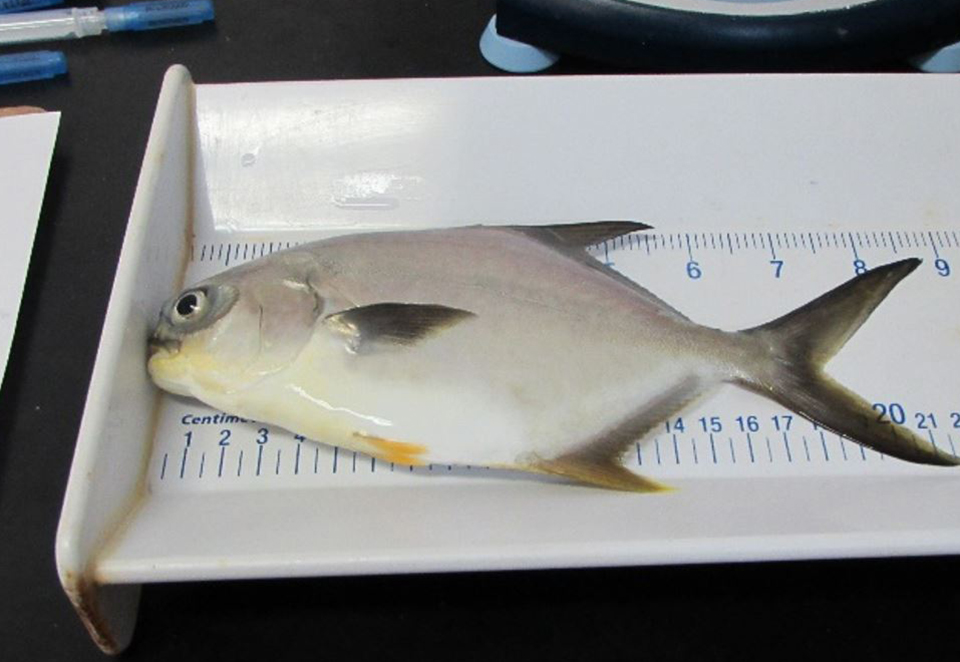
Aquafeeds
Evaluating dietary fish oil replacement in juvenile Florida pompano
Study evaluated production performance and tissue composition of juvenile Florida pompano fed diets containing fish oil or 25:75 blends of fish oil and various other lipid sources.
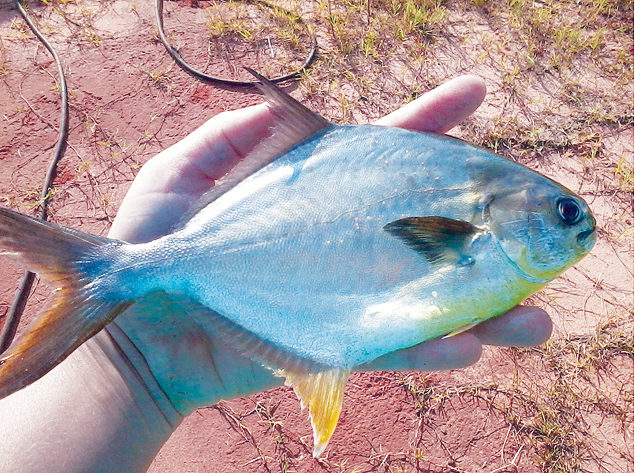
Health & Welfare
High-soy, fishmeal-free diets support Florida pompano growth
The authors have achieved good growth using a fishmeal-free diet for the carnivorous marine fish Florida pompano. In studies, they used pompano as a model marine species in a cost/benefit analysis of two extruded diets.

Aquafeeds
Replacing fishmeal with DFB in pompano diets
A study evaluated the inclusion of bacterial, dried fermented biomass as a replacement for fishmeal in four practical diets for Florida pompano juveniles. There were no significant differences in final weight, survival, FCR or thermal-unit growth coefficient.
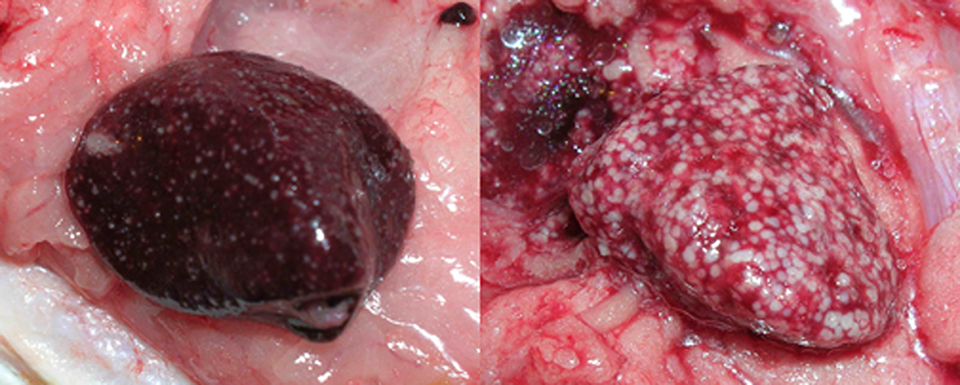
Health & Welfare
Bacterial diseases cause granulomas in fish
Granulomas in diseased fish often indicate infections by bacteria. External signs range from ulcers and emaciation to lethargy or no signs at all. Internally, gray or tan foci present in organs and can coalesce with severe inflammation.


